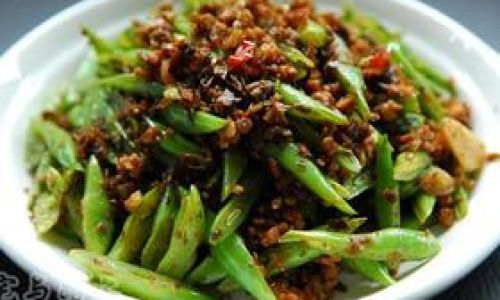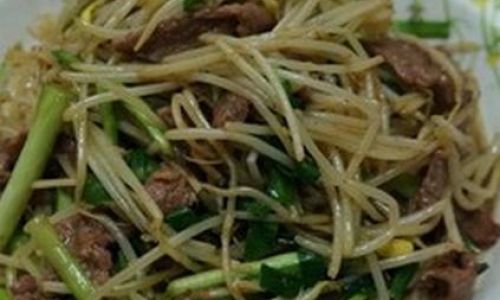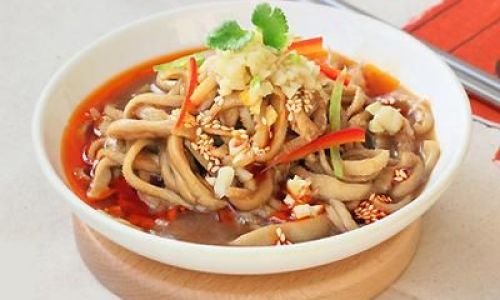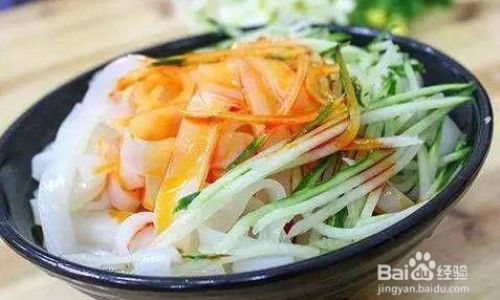Introduction: The Versatile Delight of Sprouts
In the realm of culinary arts, few ingredients offer the versatility and nutritional density of sprouts. These tiny, yet mighty, plant embryos burst with life, vitamins, minerals, and antioxidants, making them a staple in health-conscious diets worldwide. From the delicate sweetness of alfalfa sprouts to the earthy richness of broccoli sprouts, each variety brings its unique flavor and texture to the table. Among the myriad of cooking techniques, stir-frying stands out as one of the most effective methods to preserve the freshness, crispness, and nutritional value of sprouts. This comprehensive guide aims to demystify the process of stir-frying sprouts, ensuring that even the most novice cook can transform these delicate greens into a delightful and nutritious dish.

Understanding Sprouts: Types and Nutritional Benefits
Before diving into the stir-frying process, it’s crucial to familiarize yourself with the various types of sprouts and their nutritional profiles. Here are some popular options:
-
Alfalfa Sprouts: Known for their mild, slightly sweet flavor, alfalfa sprouts are rich in vitamins A, C, E, and K, as well as essential minerals like iron and calcium. They are often used in salads and sandwiches but can also be stir-fried for a nutritious side dish.
-
Broccoli Sprouts: These tiny sprouts pack a powerful punch, containing up to 50 times more sulforaphane—a compound known for its cancer-fighting properties—than mature broccoli. Their flavor is slightly nutty and slightly bitter, making them an excellent choice for stir-fries that require a bit of a kick.
-
Radish Sprouts: With their peppery, crisp texture, radish sprouts add a lively zest to dishes. They are high in vitamins A and C and contain antioxidants that support immune health.
-
Lentil Sprouts: Offering a nutty, earthy flavor and a slightly chewy texture, lentil sprouts are an excellent source of protein, fiber, and iron. They are perfect for hearty stir-fries that require a bit of substance.
-
Sunflower Sprouts: These sprouts have a delicate, nutty taste and are rich in vitamins E and B-complex, as well as minerals like magnesium and zinc. Their tender texture makes them ideal for quick stir-fries.
Preparing Sprouts for Stir-Frying
Before you can stir-fry sprouts, proper preparation is key. Here are some essential steps:
-
Rinsing and Draining: Start by rinsing your sprouts thoroughly under cold running water to remove any dirt or debris. Use a fine-mesh strainer to drain them well. Pat them dry with paper towels if necessary to remove excess moisture, as excess water can cause steaming rather than stir-frying.

-
Trimming: Depending on the type of sprout, you may need to trim any roots or hulls. For instance, lentil sprouts often have small tails that can be removed for a cleaner look and texture.
-
Blanching (Optional): While not always necessary, blanching sprouts briefly in boiling water and then plunging them into ice water can help retain their vibrant color and slightly soften their texture, making them more suitable for stir-fries that require longer cooking times. However, be mindful that this step can also slightly reduce their nutritional content.
The Art of Stir-Frying Sprouts: Techniques and Tips
Stir-frying sprouts is a quick and straightforward process, but mastering it requires attention to detail and a few key techniques. Here’s how to do it right:
-
Choosing the Right Pan: A wok or a large, flat-bottomed skillet with a well-fitted lid is ideal for stir-frying. These pans allow for even heat distribution and easy tossing of ingredients.
-
Heating the Pan and Oil: Preheat your pan over medium-high heat until it’s very hot. Add a small amount of oil—vegetable, peanut, or sesame oil are all good choices—and let it heat up until it shimmers but doesn’t smoke. A hot pan and oil ensure that the sprouts sear beautifully, locking in flavor and nutrients.
-
Adding Aromatics: Stir-fries often begin with aromatic ingredients like garlic, ginger, or shallots. Add these to the hot oil and stir-fry until fragrant, about 30 seconds to 1 minute. This step creates a flavorful base for your sprouts.
-
Stir-Frying Sprouts: Once the aromatics are fragrant, add your sprouts to the pan. The key to successful stir-frying is to use high heat and to constantly toss or stir the sprouts to prevent burning. Depending on the type and quantity of sprouts, cooking time can range from 1 to 3 minutes. Aim for a vibrant green color and a slightly tender texture.
-
Seasoning: As soon as the sprouts are cooked to your liking, quickly add seasoning. Salt, pepper, and a splash of soy sauce or tamari are classic choices. For added depth, consider incorporating a pinch of five-spice powder, a dash of rice vinegar, or a squeeze of lemon juice. Stir well to ensure even seasoning.

-
Garnishing (Optional): Before serving, consider garnishing your stir-fried sprouts with chopped herbs like cilantro, parsley, or scallions. A sprinkle of toasted sesame seeds or a drizzle of chili oil can also elevate the dish.
Creating Balanced Stir-Fry Dishes with Sprouts
While sprouts can shine as a standalone side dish, they are equally versatile as components in more complex stir-fries. Here are some ideas for creating balanced, nutritious meals:
-
Vegetable Medley Stir-Fry: Combine sprouts with an assortment of other vegetables like bell peppers, snap peas, carrots, and baby corn. Stir-fry these together with garlic and ginger, then finish with a sauce made from soy sauce, honey, and a touch of cornstarch for thickness. Serve over brown rice or quinoa.
-
Protein-Packed Stir-Fry: For a more filling meal, add a protein source like tofu, tempeh, chicken breast strips, or shrimp to your sprout stir-fry. Marinate the protein before cooking to add flavor, then stir-fry it separately until cooked through before combining with the sprouts and other vegetables.
-
Noodle Stir-Fry: Use sprouts as a key ingredient in a vegetable and noodle stir-fry. Cook your noodles al dente, then stir-fry them with sprouts, bell peppers, onions, and a sauce made from soy sauce, oyster sauce, and a bit of broth. Garnish with chopped peanuts or sesame seeds for added crunch.
-
Stir-Fried Sprout Salad: For a lighter option, combine stir-fried sprouts with raw vegetables like cucumber, cherry tomatoes, and avocado. Toss with a light dressing made from rice vinegar, sesame oil, soy sauce, and a touch of honey. This dish offers a refreshing blend of textures and flavors.
Conclusion: Embracing the Simplicity of Sprout Stir-Fries
Stir-frying sprouts is a simple yet profound way to enjoy their myriad benefits. By mastering the basics of preparation, understanding the nuances of stir-frying techniques, and experimenting with different ingredient combinations, you can transform these tiny greens into a variety of delicious, nutritious dishes. Whether you’re looking for a quick side to complement a main course or a satisfying, balanced meal in itself, sprout stir-fries offer a versatile and delightful option that’s as good for your body as it is for your taste buds. So, the next time you find yourself with a bag of sprouts in your kitchen, don’t hesitate to fire up the stove and start stir-frying. Your taste buds and your health will thank you.






0 comments